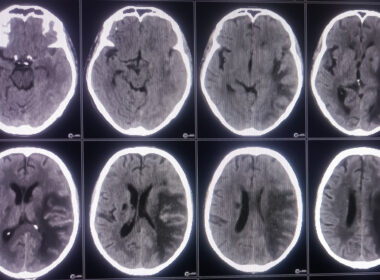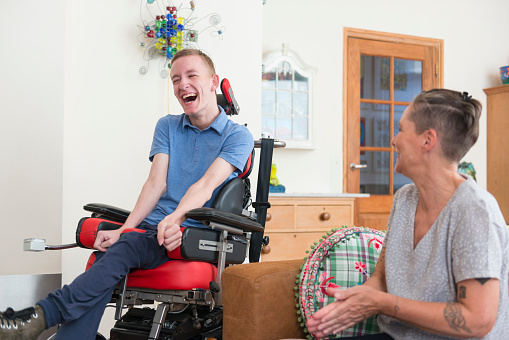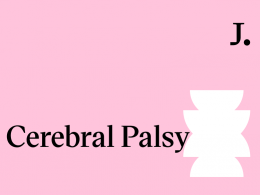Cerebral palsy is a movement disorder caused by abnormal brain development. It typically develops before birth or shortly afterward, and can be caused by gene mutations or birth complications. In some cases, cerebral palsy may have been prevented had a medical professional exercised more care and caution during the mother’s pregnancy, labor, and delivery.
If your child was diagnosed with cerebral palsy and you believe medical malpractice may have been to blame, you may be able to hold the potentially responsible medical facility and professionals accountable by filing a cerebral palsy lawsuit. Reach out to one of our experts for a free legal review and see if you may qualify to pursue legal action. A cerebral palsy lawyer can help you fight for compensation.

Cerebral Palsy Risk Factors
An infant may be more likely to develop cerebral palsy in the following circumstances:
- Multiple births: Babies born in multiple births are more likely to be born prematurely and have a low birth weight, both of which are risk factors for cerebral palsy. A 2002 study found that out of 1,000 births, there were 2.3 cases of cerebral palsy in single births; 12.6 cases for twins; and 44.8 cases for triplets.
- Premature birth: Babies who are born prematurely are more likely to have a low birth weight (5 lbs, 8 oz. or less), which is associated with an increased risk for cerebral palsy.
- Infections during pregnancy: Even common infections like chickenpox may result in dangerous complications, including brain damage, for a fetus.
- Maternal medical conditions: If the mother has thyroid problems, a history of seizures, or an intellectual disability their child may have an increased risk of developing cerebral palsy
Common Causes of Cerebral Palsy
Cerebral palsy typically forms as a result of damage to the brain during pregnancy or delivery. While some cases of brain damage are caused by genetic factors, some are caused by medical errors and birth injuries.
Some common causes of cerebral palsy include:
- Oxygen deprivation: Birth asphyxia is a lack of oxygen and blood flow to a baby’s brain. The longer that it occurs without intervention, the more likely brain damage and cerebral palsy may occur.
- Traumatic brain injury: Injuries to the brain caused by external factors, like forceps, vacuums, or difficult births, may cause irreversible brain damage.
- Infection: Any infections in the mother or fetus may create cytokines, a type of protein. Cytokines may cause inflammation of the fetus’ brain, which may result in brain damage. Chickenpox, rubella, STIs, and bacterial meningitis are all examples of infections that should be closely monitored.
- Jaundice: While jaundice is a common and often minor condition that affects newborns, in severe cases high levels of bilirubin can damage the brain, potentially causing cerebral palsy.
- Rh incompatibility: Rh is a protein found in red blood cells. If a baby is Rh-positive and the mother is Rh-negative, the mother’s immune system may attack it as a foreign substance. This can cause the baby’s red blood cells to break down, resulting in high levels of bilirubin (and jaundice).
- Prenatal or neonatal stroke: Blood clots can obstruct blood flow to the brain, causing a stroke. Sometimes a stroke is not immediately diagnosed as its effects may not appear until much later when the child begins to miss developmental milestones.
- Genetic mutations: Damage to the RHOB, FBXO31, DHX32, and ALK may cause cerebral palsy. According to recent research, roughly 14% of cerebral palsy cases are caused by genetic mutations.
How Can Medical Malpractice Cause Cerebral Palsy?
While some birth complications are unavoidable, some are caused by medical errors and carelessness. When a mother and infant are not properly monitored throughout the pregnancy and delivery, it may result in serious health consequences, like cerebral palsy.
Medical negligence can contribute to a cerebral palsy diagnosis in the following ways:
- Failure to monitor oxygen levels: Throughout labor, doctors should regularly check the baby’s oxygen saturation levels and intervene if it drops dangerously low.
- Failure to order a timely c-section: If the infant or mother appears to be in distress a doctor should order a cesarean section as soon as possible. C-sections should also be ordered when a vaginal birth would cause unnecessary health risks to the mother or infant, such as in the case of multiple births or when the baby’s head appears to be too large to safely move through the birth canal.
- Improper use of forceps and similar instruments: Forcibly using instruments like forceps to pull a baby through the birth canal can cause traumatic head injuries. A newborn baby’s head is soft and malleable so medical professionals should exercise caution when applying pressure and force to their heads.
- Failure to treat jaundice: If left untreated, jaundice may result in kernicterus: a form of brain damage caused by high levels of bilirubin which has been linked to cerebral palsy.

Filing a Cerebral Palsy Lawsuit
Medical professionals are required to take reasonable measures to ensure the safety of their patients. When they cut corners in their care or make mistakes they may be held liable for injuries that occur as a result. Hospitals and healthcare facilities are also responsible for ensuring they are properly staffed, their employees are properly trained, and their medical professionals have and are following the right procedures to promote the wellbeing of their patients.
Cerebral palsy lawsuits are one way that families can hold negligent healthcare organizations and their staff accountable for medical negligence. A lawsuit can help recover compensation for the following financial and non-financial losses that may result after a cerebral palsy diagnosis:
- Medical care: Past and future medical expenses, such as hospital stays and prescription costs, may all be recovered in a cerebral palsy lawsuit.
- Therapy costs: Including speech, physical, and occupational therapy.
- Assistive devices: Wheelchairs, ramps, and similar devices used to help a child move throughout their day can be costly. A successful lawsuit may help recover some of these expenses.
- Caregiver costs: If a child requires 24/7 care and assistance to complete daily tasks, a part-time or full-time caregiver may be necessary.
- Pain and suffering: While it is impossible to apply a monetary value to the lifelong restrictions and challenges a child may face as a result of cerebral palsy, it is still a significant loss that should be considered when determining a final cerebral palsy settlement or verdict.
In addition to recovering necessary financial compensation to help properly care for and support a child with cerebral palsy, filing medical malpractice lawsuits also helps send an important message to healthcare providers that medical negligence should not be tolerated. One successful lawsuit may help prevent other families from experiencing similar birth complications and injuries in the future.

Speak to a Cerebral Palsy Lawyer
If you believe your child’s cerebral palsy was caused by avoidable medical mistakes and gaps in care, you may qualify to file a cerebral palsy lawsuit. Fill out our contact form below and our team of experts will review the details of your case and connect you with an experienced cerebral palsy lawyer if we believe you may be eligible to pursue legal action.
Legal consultations are completely free. If you do retain one of the cerebral palsy lawyers in our network, you will not pay any fees unless they win your case.












